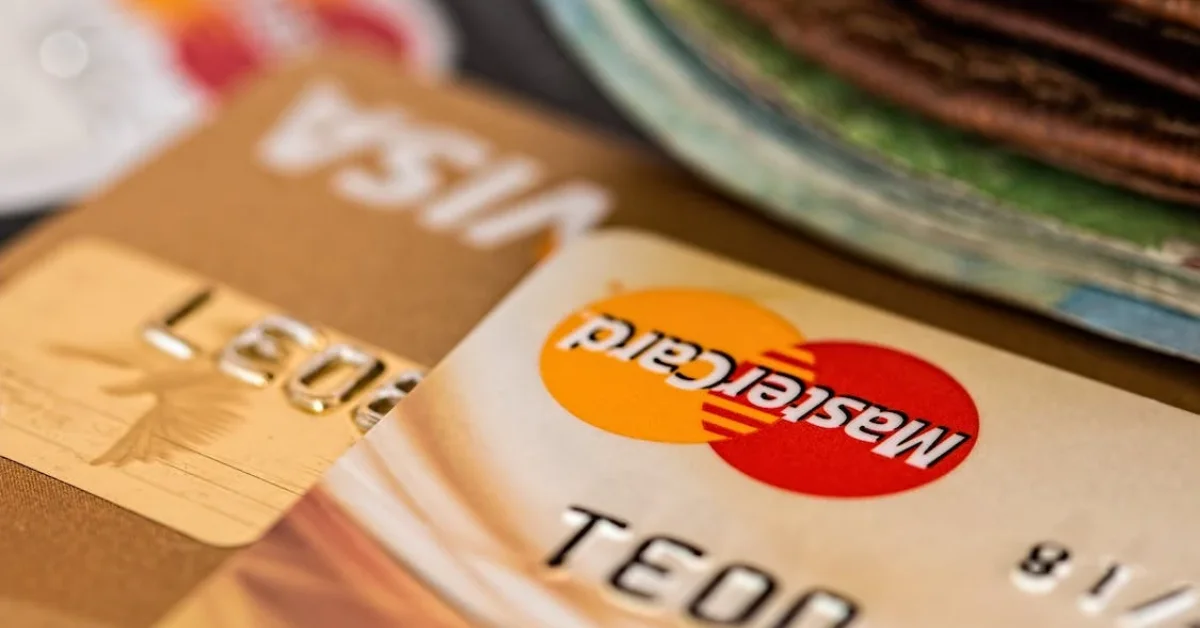Embrace the freedom and peace of mind that comes with a debt-free lifestyle. Imagine a life where payments, interests, and the lurking pressure of due dates no longer hold your financial destiny in their grip. Now, what if we told you that kind of life is entirely within your reach? Indeed, becoming debt-free is more than a pipedream. It’s a practical and achievable goal that you can start working on today. This article aims to empower you with the knowledge and tools to eliminate debt and pursue the path towards financial independence. Whether you’re battling with student loans, credit card debt, mortgages, or personal loans, we got you covered. So stick around and let us guide you on this exciting journey towards a more secure and abundant financial future. Enjoy the ride because a debt-free life is just around the corner!
The Current Debt Landscape in the U.S. and Globally
Keeping a mindful eye on our finances has become increasingly crucial in recent years, especially given the dynamic nature of the modern economy. An in-depth understanding of our financial landscape can encourage healthier decisions regarding expenditures, loans, and debt management. Today, we’ll explore the current debt landscape in the U.S. and globally, which may shed light on some financial realities you may not have been aware of.
Total Household Debt
In an increasingly demanding economy, it’s no surprise that household debt levels are rising. In fact, by the second quarter of 2023, total household debt increased by a minimal yet noteworthy 0.1%, reaching a dizzying figure of $17.06 trillion. While this slight upsurge may seem insignificant, it mirrors an endless economic cycle where debt is a constant companion for many households.
Average Personal Debt
Meanwhile, the average personal debt paints an equally compelling picture. Notably, in 2023, it stands at an approximate $21,800 per American. As this figure suggests, most adults are grappling with some form of debt – be it student loans, credit card balance, or mortgages, indicating a seemingly impenetrable cycle of borrowing and repaying.
Student Loan Debt
On the education front, student loans have become an unfortunate rite of passage for many young adults seeking higher education. Fascinatingly, the student loan debt accumulation rate has seen a slight downgrade to 1.17% in 2023, down from 1.53% in the Q1 of the same year. Additionally, the states saw a variety of averages, with New Hampshire leading the way with the highest average student loan debt at $39,928 and Utah at the lower end with $18,344.
Credit Card Balance
Credit cards, a ubiquitous symbol of modern consumerism, also contribute significantly to our debt landscape. Interestingly, the total credit card balance in the U.S. has reached the trillion mark, more specifically $1.031 trillion in Q2 of 2023. This suggests an unsettling reliance on credit for everyday expenses.
Debt Payment in relation to Income
Broadening our perspective, let’s discuss how much of our income is committed to settling debts. In 2023, it’s reported that an average American’s debt payment makes up a biting 9.6% of their income. This tells a story of hard-working individuals tirelessly chipping away at their debt mountain month after month.
Debt Payoff Amount
Finally, the ultimate financial goal for most individuals is the total payoff of their debts. Navigating through a sea of debts can indeed be arduous, but understanding the grand scheme of things—like the landscape we’ve just explored—can equip individuals with the tools to shape a brighter financial future.
Our journey through the current debt landscape pertinent to the current debt landscape in the U.S. and globally ends here. It’s an ongoing conversation, tackled on a daily basis by millions. By being aware of these figures, we’re better placed to make sound financial decisions, minimizing our debt burden and maximizing our financial freedom.
Paying Off Debt
There’s a sense of freedom that comes with zero debt, and an equal measure of overwhelming stress when it feels as though your finances are spiralling out of control. Tackling debt may seem like an uphill struggle; terrifying even. But it needn’t be. With the right strategy, constant commitment, and a positive mindset, climbing out of debt is absolutely within your grasp.
One astounding fact came to light recently – U.S. households managed to pay off an eye-popping $169 billion in debt during the second quarter of 2023. Perhaps even more surprising is this figure represents a whopping 216% increase over the average second-quarter changes over the past 19 years. This immense achievement underscores that debt reduction isn’t just a fleeting dream—it’s attainable, and many people are making it happen.
Making savvy moves like consolidating your debts, initiating smarter budgeting practices, or chipping away bit by bit at your outstanding balances can make a significant difference to your overall financial health. It’s crucial not to presume you’re stuck in a financial rut. Every endeavor towards debt reduction takes you one step closer to financial freedom.
Living debt-free is not just about escaping the suffocating hold of unpaid bills and loans, it’s about assuming control of your life, finances, and your future. It signifies taking proactive measures towards uncluttered financial wellbeing. Your efforts towards paying off debt won’t just carve you a clear path towards a debt-free life, but they can provide a sense of accomplishment and the confidence to tackle any monetary challenges that come your way.
As we’ve seen with the incredible feat accomplished by U.S households in Q2 2023, progress is being made, the debt mountain is being eroded, and financial freedom is within reach for many more of us. Together, let’s keep that momentum going.
Reach of Debt: From Student Loans to Global Impact
As the dust trails from the economic setback caused by the global pandemic, a significant thorn in the side of many individuals, including the world economy, remains the incessant rise in debt. From towering student loans to the enormous debt straining the global economy, understanding the reach and impact of debt is paramount.
Student Loan Debt in the U.S.
Student loan debt is a term that sends shivers down the spine of countless Americans. With the total volume of student loans amassing a whopping $1.78 trillion as of March 2023, it clearly outlines the extent of the debt issue. This towering figure is further accentuated when considering how widespread the issue is; approximately 43.5 million Americans are saddled with student loans. These staggering figures serve as a grim reminder of the extensive reach of debt in the United States.
Debt Impact on the Global Economy
The debt predicament, unfortunately, isn’t contained within the perimeters of the United States. In fact, it extends to every corner of the globe. The global debt to GDP ratio—256%—paints a picture of the substantial burden debt has placed on the world economy. This evidently underscores the significant fallout that can result from excessive and unregulated borrowing.
Debt-Free Households
On the glowing side of the spectrum, some Americans have managed to evade the clutches of debt. Less than 25% of American households remain debt-free. This cohort, albeit democratic, serves as an inspiration for other households still laboring under the weight of debt, instilling the hope that, indeed, it’s possible to lead a debt-free life.
In essence, debt casts a broad net, encompassing individuals, nations, and entire economies- a testament to its far-reaching impact. Understanding this reach and devising strategies to counteract the ill effects is integral to fostering economic growth and stability #reach_of_debt. With the information furnished, now is the time for concrete action to untangle this complicated web of debt. With collective effort, we can restore economic stability and foster an environment teeming with possibilities.
Read More: Exploring Gold Investment Strategies and Considerations
Future Debt Predictions
Navigating the labyrinth of the financial world can be daunting, and predicting future trends is an even greater challenge. However, understanding these patterns is crucial for both our individual financial health and economic stability in general. Today, let’s delve into future debt predictions, focusing on an intriguing and worrying forecast: the possible spike in debt delinquencies in the U.S. by the year 2023.
This forecast may sound alarming but remember, knowledge is power. By understanding where we might be heading, we can make plans and put safeguards in place, preventing future financial instability.
So, why predict a spike in debt delinquencies?
Secondly, Debt cycles play a vital role. These cycles refer to the repetitive patterns of economic growth (expansion), followed by debt reduction (constriction). The analysis of recent economic patterns suggests we could be heading towards the constriction part of the cycle.
Thirdly, The potential end of pandemic relief measures may also contribute towards the impending rise in delinquencies. Since the start of the pandemic, several relief measures were implemented to help families manage their finances during these tough times. We must be cognizant of the possibility that once these measures end, more people might find it challenging to repay their debts promptly.
Now that we know the possible causes, what can we do about it?
- Awareness – Be aware of the potential shift. It’s better to be proactive than reactive when it concerns your financial wellbeing.
- Plan – Asses your finances and start planning on how you will manage the increased debt. This could be anything from setting up an emergency fund or even refining your budget.
“The best way out is always through.” – Robert Frost.
While the future’s outlook may seem grim, remember every cloud has a silver lining. Now that we have an understanding of the potential future_debt_predictions, armed with the correct tools and planning, we can face it head on. Just like Robert Frost said, “The best way out is always through.” Keep going, and remember to make informed financial decisions. With the right knowledge, we can overcome any obstacle.
Strategies for Becoming Debt-Free
Creating a Budget
Let’s dive into the exciting world of budgeting! I promise, it’s not as intimidating as it might sound.
Quite the opposite, a well-thought-out budget can be your best ally in your fight against debt. Seeing where your money is going can give you a new perspective and control over your finances. You’ll discover the power of knowing how to prioritize expenses, distinguish between needs and wants, and redirect your money toward reducing debt.
Here’s a simple way to start:
- Determine your income: How much money is coming in every month after taxes?
- Track your expenses: Can you account for every dollar spent? Don’t forget those cup of coffee on your way to work!
- Categorize your expenses: Divide them into essentials (like rent and food), discretionary spending (like entertainment), and debt payments.
- Create your budget: Now, it’s time to crunch the numbers. Allocate percentages of your income to each category, ensuring that you’re not only living within your means but also paying off your debts.
Remember: A budget isn’t a magic solution. It’s a tool that requires your commitment for it to work. But, once you get the hang of it, you’ll wonder how you lived without it.
Debt Consolidation
Next on the list is debt consolidation. Picture this: instead of juggling multiple payments, why not combine all your debts into one? Debt consolidation can be a real game changer, particularly for those grappling with high-interest credit card debt. It’s all about simplicity and saving on interest costs.
Sounds great, right? Here’s a closer look:
- Consolidation Loans: These are offered by banks and credit unions. You borrow enough from them to pay off all your smaller debts, then make one monthly payment to the loan provider.
- Credit Card Balance Transfers: This involves transferring all your balances to one low-interest credit card.
Be cautious, though. Ensure you can meet the terms of your consolidation plan to avoid hurting your credit score.
Debt Management Plans
If the first two methods aren’t your cup of tea, there’s one more strategy worth considering – Debt Management Plans (DMPs).
DMPs are typically offered by credit counseling agencies. They negotiate with your creditors to reduce your interest rate or waive certain fees. You then make one single payment to the agency, which disburses the funds accordingly.
The most vital aspect here is choosing a reputable and trustworthy agency. Remember, your finances are on the line.
Doesn’t tackling debt seem more manageable after discussing these strategies? Your journey towards becoming debt-free starts today. Keep in mind, applying financial discipline and sticking with your plan are key.
By using these strategies, you are taking a significant step towards financial freedom. Follow this comprehensive guide on Strategies for Becoming Debt-Free for more tips!
Conclusion
Navigating the complex world of debt can seem daunting, but armed with the right knowledge and tools, it becomes less of a challenge. A debt-free life is achievable and worth the effort it demands. It contributes to a financially secure future, which leads to a stress-free lifestyle and freedom from creditors, something we all aspire to.
At AskTheMoneyCoach.com, we’re there to guide you through every step of your financial journey towards debt elimination. From budgeting and saving tips, investment advice, to personalized financial coaching, we offer many resources you need to gain the upper hand over your debt. Remember, the road to financial freedom is a personal one, making every victory all the more satisfying. Embrace the journey today and live a debt-free life you deserve.
Frequently Asked Questions
- What are some effective strategies for debt-free living?Some effective strategies for debt-free living include creating a budget and sticking to it, cutting unnecessary expenses, focusing on high-interest debts first, negotiating lower interest rates or repayment plans with creditors, and considering debt consolidation or debt settlement options.
- How long does it usually take to become debt-free?The time it takes to become debt-free varies depending on individual circumstances such as the amount of debt, income, expenses, and the chosen repayment strategy. It can take anywhere from a few months to several years to become debt-free.
- Is it better to pay off debts or save money first?Ideally, it is recommended to have a balance between paying off debts and saving money. It’s important to have an emergency fund in place to cover unexpected expenses while also tackling debts. Prioritize higher interest debts while saving a small portion of your income towards savings.
- Should I consider credit counseling or debt management programs?Credit counseling or debt management programs can be beneficial for individuals struggling with debt. These programs help create customized repayment plans, negotiate with creditors, and provide financial education to help achieve debt-free living. It’s important to research and choose reputable and non-profit organizations for such services.
- Will living a debt-free life improve my credit score?Living a debt-free life does not directly improve your credit score as credit scores are based on credit history and the ability to manage credit responsibly. However, by eliminating debts and making timely payments, you can build a positive credit history and improve your credit score over time.










